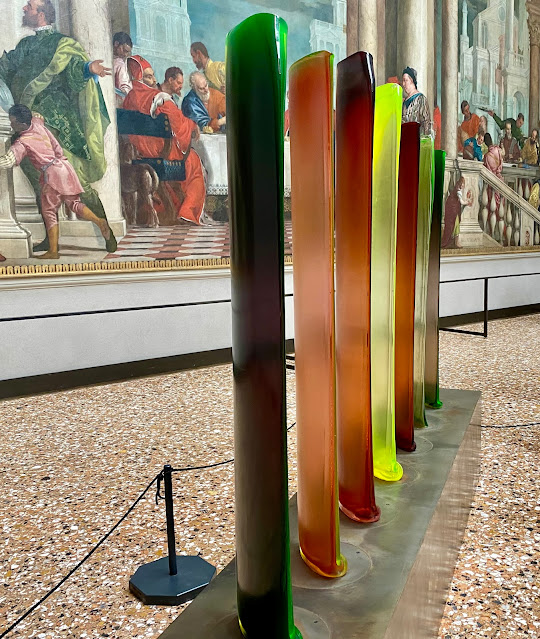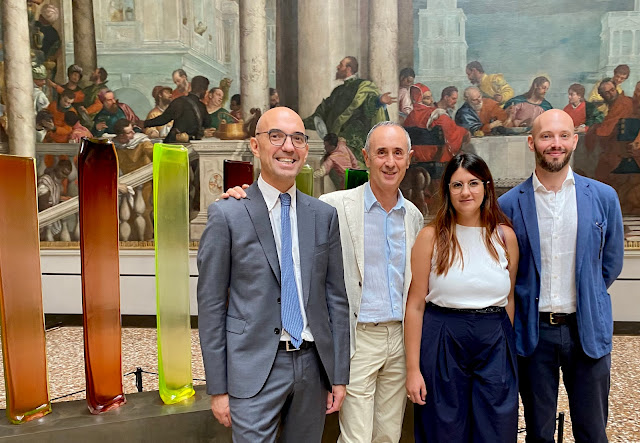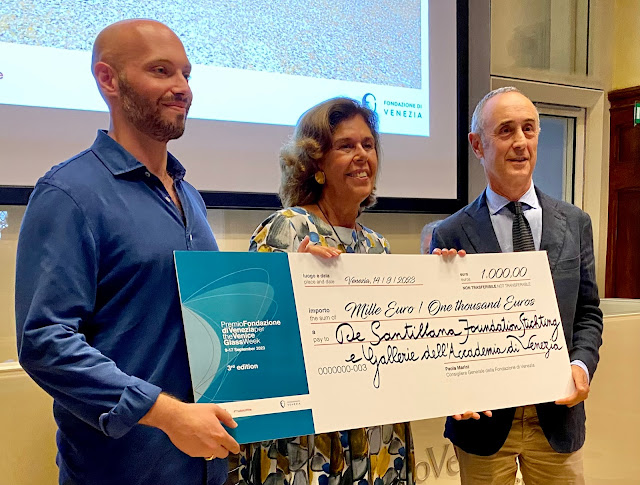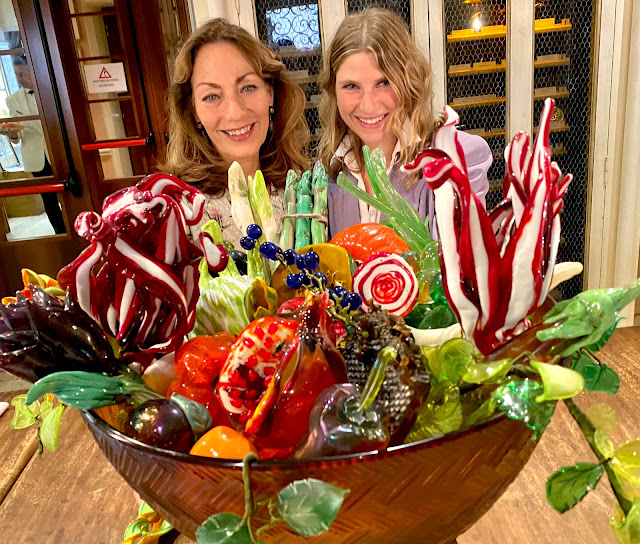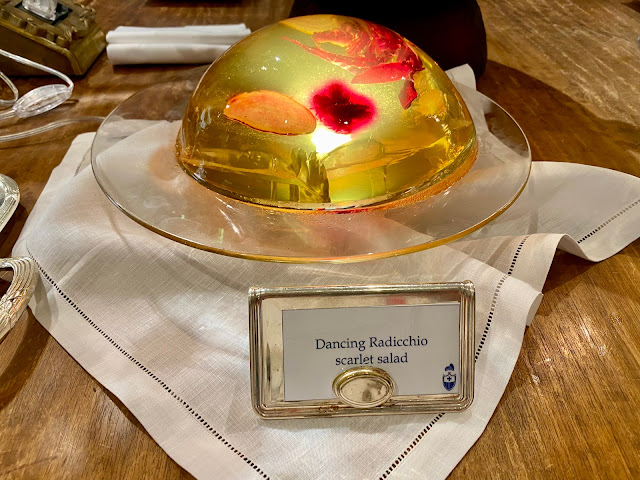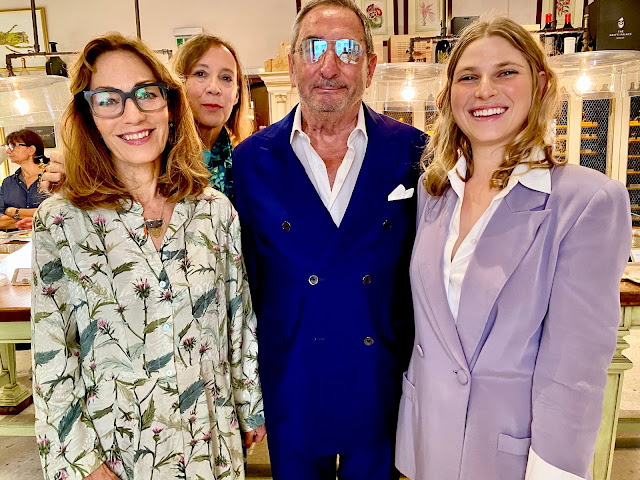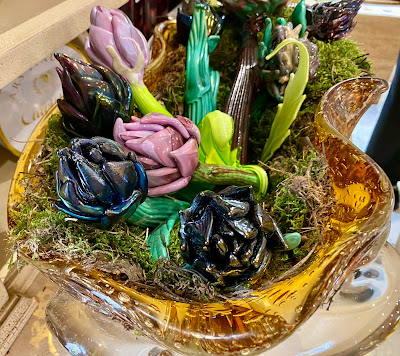"Many think that fantasy is the gift of imagining things unseen.
To the painter and the artist .. it is the power of transforming what is seen".
Giorgio de Chirico
Courbet - Rivista di Firenze - November 1924
Conegliano - Palazzo Sarcinelli
Giorgio de Chirico. Metafisica Continua
At Palazzo Sarcinelli in Conegliano the exhibition - Giorgio de Chirico. Metafisica Continua - until February 25 - curated by - Victoria Noel-Johnson - brings together for the first time, a large group of masterpieces by the Italian maestro. The exhibition anticipates the celebrations of the centenary of Surrealism - 1924-2024 - a movement of which de Chirico was elected precursor by the founder André Breton. For the latter, as for other surrealists such as Max Ernst, René Magritte, Yves Tanguy and Salvador Dalì, de Chirico's first metaphysical painting - 1910-1918 - played a fundamental role in the birth and development of the movement from the beginning of the 1920s onwards. Through the 71 works on display, the exhibition includes an important selection of de Chirico's main subjects, with particular attention to the neo-metaphysical season - approximately 1965-1978 - in which the artist returns to elaborate the themes that populated the works of the first metaphysical period and in addition, to presenting his best-known motifs, it highlights the range of techniques in which the maestro ventured: painting, drawing, watercolor, sculpture and lithography.
Metaphysical Interior with Black Oval - oil on canvas - 1968c.
Metaphysical Interior with Pears - oil on canvas - 1968
".. I have an untroubled conscience and am full of inner joy, for I know that the value
of what I am doing will become clear, sooner or later, to even the most".
Giorgio de Chirico
Rome, to - André Breton - Paris - 1921
The Painter - oil on canvas - 1958 - The Astrologist - oil on canvas - 1970
has brought out of the void, something which, previously, did not exist".
Giorgio de Chirico
Eluard-Picasso Manuscript - 1911-15
In the last decade of his career, Giorgio de Chirico - 1968-1976c. - produced a corpus of works commonly defined as neo-metaphysical drawing on subjects conceived in the 1910s, 1920s and 1930s - in particular the Squares of Italy - the Metaphysical Interiors, the Masks, the disturbing Muses, the faceless Troubadours, the Archaeologists, the Gladiators and the Mysterious Baths - which he develops in highly innovative ways. Decidedly simpler and brighter than the darker palette that characterized previous works, the neometaphysical paintings also appear conceptually happier, a reflection of the artist's professional and personal fulfillment.
The Masks - oil on canvas - 1973
curator
"If you want an exact replica of these two paintings - The Disquieting Muses of 1918 and The Sacred Fishes of 1918-1919 - I can make it for you for 1000 Italian Lire each. These replicas will have the only flaw of being made with a more beautiful material and a better technique."
Giorgio de Chirico
letter to S.Khan - wife of André Breton - 10 March 1924
Between approximately 1968 and 1976 de Chirico also produced numerous almost identical copies of famous works, in particular The Disquieting Muses and The Tower. However, it would be wrong to interpret such works as simple reproductions made for purely commercial purposes. On the contrary, they are part of a much more complex explanation deriving from the first "copy" of a work from the first metaphysical period, that of the original painting The Disquieting Muses - 1918 - which in the winter of 1923-1924 - exactly a century ago – André Breton, founder of the Surrealist movement, commissioned de Chirico. By agreeing to produce copies of his own works, the artist strengthened the conceptual and aesthetic ownership of his early metaphysical paintings, a property of which Breton and the Surrealists increasingly sought to deprive him during the 1920s.
The Disquieting Muses - oil on canvas - 1974Troubadour - oil on canvas - 1972
The Painter of Horses - oil on canvas - 1974
watercolour pencil charcoal with watercolour - 1973
Mysterious Baths - oil on canvas - 1973
In 1934, de Chirico illustrated Mythologie - Editions des Quatre Chemins, Paris - by the French Surrealist poet Jean Cocteau. Consisting of ten lithographs and frontpiece, it features the artist's new subject matter known as - Bagni Misteriosi.
The Idol in the Mysterious Baths - Mythologie - lithograph - 1934The exhibition - Giorgio de Chirico. Metafisica Continua - until February 25 - at Palazzo Sarcinelli is curated by Victoria Noel-Johnson, and organized by ARTIKA, in collaboration with the Comune di Conegliano and the Giorgio and Isa de Chirico Foundation.
Daniel Buso, Fabio Chies, Victoria Noel-Johnson,
Cristina Sardi and Elena Zannoni
Pin It



























